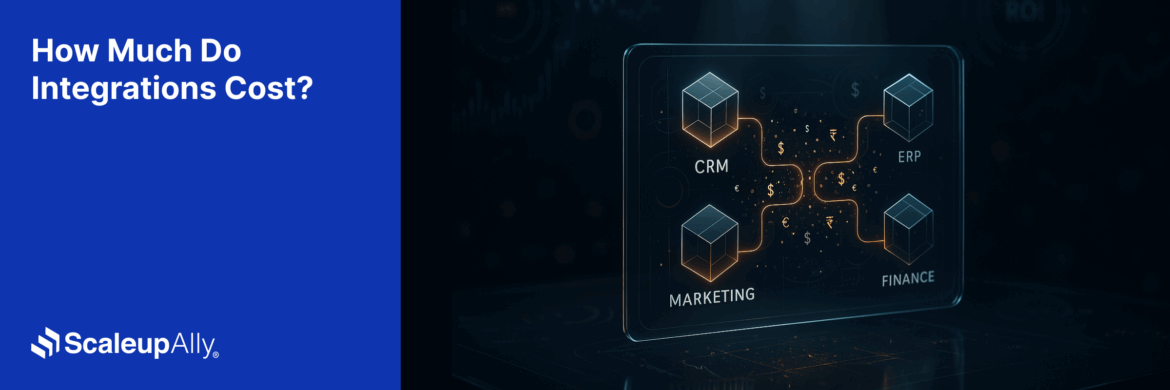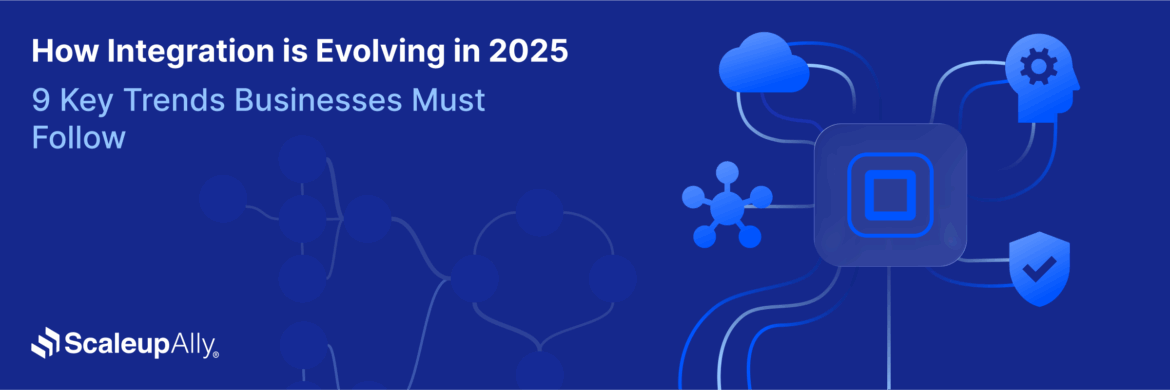
Data Warehouse Cost Breakdown: Factors, Pricing Models & Platform Comparison
Tarsem Singh | November 6, 2025 , 14 min read
Table Of Content
Data warehouse cost can make or break your budget if you’re not careful. That’s why understanding the numbers matters. So how much does a data warehouse actually cost? Data warehouse cost estimation isn’t straightforward, though. Storage, compute, and queries all add up differently depending on your choice. The cost of data warehouse implementation varies across providers. This guide breaks down pricing models, hidden fees and gives you a clear data warehouse cost comparison.
Key Takeaways
- Data warehouse costs depend on your needs. Storage, compute, and data transfer are your main cost drivers, but hidden expenses like egress fees and poorly optimized queries often surprise teams after going live.
- Different pricing models suit different situations. Pay-as-you-go works for unpredictable workloads, while subscriptions or reserved capacity offer better value for steady usage. Understanding how platforms charge helps you pick the right model and predict actual spending more accurately.
- Platform choice matters, but there’s no universal winner. Snowflake offers multi-cloud flexibility, BigQuery excels at serverless simplicity, and Redshift integrates best with AWS. Your existing infrastructure and usage patterns should drive the decision more than advertised prices.
- Cost optimization is an ongoing practice, not a one-time fix. Right-sizing resources, optimizing queries, implementing data lifecycle management, and eliminating waste can cut spending by 30 to 50 percent without sacrificing performance. Small improvements compound into substantial savings over time.
- Hidden costs often exceed obvious ones if you’re not watching carefully. Data egress fees, unused resources, development environments running 24/7, and inefficient queries quietly inflate bills. Regular audits and transparent cost tracking help catch these issues before they become budget problems.
How Much Does the Data Warehouse Cost?
- How Much Does the Data Warehouse Cost?
- Factors Influencing Total Data Warehouse Cost
- How to Estimate the Cost of Building a Data Warehouse
- Data Warehouse Cost Breakdown by Component
- Data Warehouse Pricing Models Explained
- Cost Comparison: Top Data Warehouse Platforms in 2025
- Hidden Costs You Might Overlook
- How to Optimize and Reduce Data Warehouse Costs
- Conclusion
- Frequently Asked Questions
There’s no single answer because every setup is different. Most businesses spend anywhere from a few hundred dollars monthly to tens of thousands. It depends on your team size in some instances. Small teams with light usage might keep costs low. Larger organizations running complex analytics daily will see much higher bills.
Data warehouse cost estimation starts with understanding your workload. How much data are you storing? How often do you run queries? These questions shape your spending more than the platform itself.
Implementation and migration represent additional cost factors. Migration, setup, and training aren’t free. Some companies spend months getting everything right, which means paying for expertise and downtime.
When comparing platforms, a cost comparison provides valuable clarity. Platforms price differently. Some charge mainly for storage. Others focus on compute. A few bundle everything together, which can simplify budgeting but might cost more overall.
The true cost of a data warehouse starts with knowing what drives those costs up and planning accordingly. We explore the factors that influence the cost of data warehouse implementation next.
Factors Influencing Total Data Warehouse Cost
Some factors are obvious, like storage and compute. Others, like data transfer fees or the cost of data warehouse implementation when you’re migrating systems, come unexpectedly. Here are the key factors that shape your total spending.
1. Storage Volume
Storage is where most data warehouse cost begins. The more data you keep, the more you pay. Some platforms charge per terabyte, while others offer tiered pricing that drops as you scale.
2. Compute Resources
Every time someone runs a report or refreshes a dashboard, compute resources kick in. Some platforms separate compute from storage, letting you scale independently. Others bundle them together.
3. Data Ingestion and Transfer
Moving data in and out isn’t always free. Ingestion fees apply when you load data from external sources. Cloud providers often charge for egress, meaning data leaving their network. If you’re frequently exporting large datasets or syncing across platforms, these fees can surprise you. It’s a hidden part of the cost of a data warehouse that many overlook at first.
4. Query Complexity and Frequency
Not all queries cost the same. Complex queries scanning millions of rows cost significantly more. Frequency matters too. Running the same heavy query every hour multiplies your spending. Optimizing queries reduces cost. Better indexing, smarter SQL, and caching results all help. But if your business needs demand constant, complex analysis, budget for it upfront.
How to Estimate the Cost of Building a Data Warehouse
Here’s how to estimate the cost of building a data warehouse systematically.
1. Assess Your Current and Future Data Needs
Start with what you have now. How much data are you storing today? What’s your growth rate? If you’re adding a terabyte every quarter, factor that into your projections. Think ahead too. Business growth means data growth. If you’re planning to add new data sources or expand analytics, your storage needs will climb. Estimating conservatively here usually backfires because data rarely shrinks.
2. Calculate Storage Requirements
Storage is the foundation of data warehouse cost. Measure your current data volume, then multiply by your expected growth over the next year or two. Don’t forget compression ratios. Most platforms compress data automatically, often reducing size by half or more. But compression varies by data type. Text compresses well. Already-compressed formats like images don’t shrink much further.
3. Estimate Query and Compute Workloads
How often will people query your warehouse? Daily reports, ad-hoc analysis, and automated dashboards all consume compute. List your main use cases and estimate query frequency for each.
Query complexity matters as much as volume. A simple lookup is cheap. A query joining ten tables and scanning billions of rows costs significantly more. If possible, run sample queries on similar datasets to gauge resource consumption.
4. Factor in Data Ingestion Costs
Data doesn’t appear in your warehouse magically. It has to move there, and movement costs money. Count your data sources and estimate how much data flows from each one daily. If your data originates in one cloud region and your warehouse sits in another, expect transfer charges.
Batch ingestion is usually cheaper than real-time streaming. But if your business needs near-instant updates, streaming becomes necessary despite higher costs. Balance speed requirements against budget constraints.
Data Warehouse Cost Breakdown by Component
Here’s how the cost of data warehouse typically splits across major components.
1. Storage Costs
Storage is usually your baseline expense. It’s consistent, predictable, and grows steadily as your data accumulates. Most platforms charge per terabyte per month, though rates vary.
Hot storage costs more because it’s optimized for frequent access. Cold or archive storage offers cheaper rates but slower retrieval times. Many businesses use tiered storage, keeping recent data hot and archiving older records to cut costs.
2. Compute Costs
Compute powers everything that happens with your data. Queries, transformations, aggregations, and reports all consume compute resources. This component often becomes the largest part of data warehouse cost for active users.
Some platforms charge per query. Others bill for compute hours or use a credit system. Understanding your platform’s model matters because it shapes how you optimize spending.
3. Data Transfer and Egress Fees
Moving data costs money, especially when it crosses network boundaries. Ingesting data into your warehouse sometimes incurs fees, though many platforms offer free or reduced-rate ingestion to attract customers.
Egress is where costs add up quickly. Pulling data out of your warehouse, whether for exports, backups, or integration with other tools, often triggers charges. Cross-region transfers cost even more.
If you’re syncing data between your warehouse and external systems frequently, budget for these transfers. They’re easy to overlook during data warehouse cost estimation but can represent 10 to 20 percent of your total bill.
Data Warehouse Pricing Models Explained
Each pricing model has trade-offs. Some offer simplicity and predictability. Others provide flexibility but require careful monitoring. Here’s how the major pricing models work.
1. Pay-As-You-Go Model
Pay-as-you-go charges for exactly what you use. Storage, compute, and data transfer all bill separately based on actual consumption. Nothing runs, nothing charges. This model offers maximum flexibility. It’s ideal for unpredictable workloads. Startups testing ideas or teams with seasonal usage patterns benefit because costs scale naturally with activity. You’re not paying for capacity you don’t need.
2. Subscription-Based Pricing
Subscription models charge a flat monthly or annual fee. You get access to specific resources or features for that period regardless of how much you actually use them. Many subscriptions tier by capacity. A basic plan might include limited storage and compute. Higher tiers offer more resources and advanced features. You pick the tier that fits your needs and upgrade as you grow.
3. Credits-Based System
Credits systems give you prepaid units that cover various operations. Storage consumes credits slowly. Compute uses them faster. Complex queries burn through more credits than simple ones. You buy credit packages upfront and draw them down as you work.
This model blends predictability with flexibility. You control spending by purchasing only the credits you need. Usage stays within budget because you can’t spend more than you’ve loaded. It’s easier to track than pure pay-as-you-go.
4. Serverless Pricing
Serverless models charge only for query execution time and data processed. There’s no infrastructure to provision or manage. The platform automatically scales resources to match demand, and you pay for the exact compute consumed.
This approach eliminates idle resource costs. When nobody’s querying, you’re not paying for compute. It’s incredibly efficient for sporadic or variable workloads. Small teams especially benefit because they avoid infrastructure overhead.
Storage typically bills separately in serverless models. You pay for data at rest continuously, then add query costs on top. For read-heavy workloads with frequent complex queries, costs can climb higher than fixed-resource alternatives. But for light usage, serverless often offers the lowest total cost of data warehouse.
Cost Comparison: Top Data Warehouse Platforms in 2025
Here’s how the major platforms stack up on cost and what drives their pricing.
1. Amazon Redshift
Redshift offers both serverless and provisioned options. The serverless version charges based on compute capacity measured in Redshift Processing Units, which adjusts automatically to workload demands. You pay per RPU-hour consumed (~$0.24 / hour).
Storage bills separately at a competitive $5 per terabyte monthly. Backup storage beyond automated snapshots adds cost. Data transfer within AWS is often free, but moving data out incurs egress fees that can surprise new users.
2. Google BigQuery
BigQuery pioneered the serverless model and remains one of its best implementations. You pay only for queries executed and data stored. There’s no infrastructure to manage, no clusters to resize, and no idle capacity waste.
Query pricing charges $5 per TB scanned. Storage costs less than most competitors but adds up as data accumulates. The first terabyte of queries each month is free, which helps smaller teams keep costs low initially.
BigQuery offers flat-rate pricing too. You buy slots ($0.02 / slot/hour) representing query processing capacity, paying a fixed monthly amount regardless of usage. This benefits heavy users because it caps query costs, making data warehouse cost estimation more predictable.
3. Snowflake
Snowflake separates storage and compute cleanly. Storage charges $23 per terabyte monthly. Compute bills by the second for virtual warehouse runtime, measured in Snowflake credits.
Snowflake uses a credits system. Different cloud providers and regions have different credit prices, complicating direct comparisons. But the credit model provides clear consumption tracking once you understand your baseline credit usage patterns.
Hidden Costs You Might Overlook
Here are the hidden costs that catch people off guard most often.
1. Development and Testing Environments
Production isn’t your only environment. Development, staging, and testing environments all consume resources too. If these mirror production scale, they effectively double or triple your infrastructure costs.
Many teams forget to shut down non-production resources when not actively using them. A staging warehouse running 24/7 for occasional testing sessions wastes money continuously. Even scaled-down environments add meaningful costs over time.
2. Training and Onboarding
Getting teams productive with a new warehouse takes time and often money. Training courses, whether internal or from vendors, consume budget. External consultants who teach best practices charge premium rates.
Documentation and knowledge transfer require ongoing investment. As team members change, new people need training. Maintaining internal documentation and examples demands time from senior staff who could otherwise focus on higher-value work.
3. Data Quality and Cleaning
Poor data quality upstream multiplies warehouse costs. If source systems send messy data, your warehouse does extra work correcting it. Investing in data quality at the source reduces warehouse processing burden, but coordination across teams takes effort.
How to Optimize and Reduce Data Warehouse Costs
Here’s how to bring your data warehouse cost under control and keep it there.
1. Control Data Transfer Costs
Egress fees add up quickly, but thoughtful architecture minimizes unnecessary movement. Keep processing close to your data rather than constantly pulling data out for external computation.
Batch transfers instead of streaming when real-time isn’t required. Moving data once daily in bulk costs less than continuous trickle syncing. Use data sharing features when available. Platforms like Snowflake let you share data without copying it, eliminating transfer costs entirely for certain use cases. Recipients query your data directly without moving it across networks.
2. Optimize Data Ingestion
Batch ingestion costs less than real-time streaming. Evaluate whether you truly need continuous updates or if hourly or daily loads suffice. Most analytics use cases tolerate modest staleness without impacting decisions.
Deduplicate data before loading. Processing duplicates wastes compute and storage. Cleaning data upstream reduces warehouse burden and improves query performance simultaneously.
Use incremental loading instead of full refreshes. Load only changed records rather than reprocessing entire datasets daily. This dramatically reduces ingestion time, compute usage, and associated costs.
3. Educate and Empower Your Team
Cost optimization works best when everyone participates. Train analysts and engineers on efficient practices rather than policing every action. Understanding drives better decisions than rules imposed from above.
Share cost data transparently. When teams see their impact on spending, they self-correct. Hide costs and people optimize only when forced. Visibility creates natural accountability.
Celebrate optimization wins. When someone finds a way to cut query costs in half, recognize their contribution. Positive reinforcement encourages continued attention to efficiency.
Conclusion
Data warehouse cost doesn’t have to be a mystery. Understanding what drives spending, comparing platforms honestly, and optimizing continuously keep your budget under control. Need help choosing the right warehouse or cutting costs on your current setup? Contact ScaleupAlly today for guidance.
Frequently Asked Questions
Q: How much does it cost to set up a data warehouse?
Setup costs range from a few thousand to over $100,000 depending on complexity. Small teams using serverless platforms might spend minimally on configuration and testing. Larger migrations with legacy systems, data transformation, and consultant fees push costs much higher. Factor in staff time, training, and initial optimization efforts beyond platform fees.
Q: Which data warehouse platform is most cost-effective?
No single platform wins for everyone. BigQuery often costs least for sporadic, serverless workloads. Redshift provides value for AWS-heavy environments with steady usage. Snowflake excels in multi-cloud scenarios despite premium pricing. Your specific usage patterns, existing infrastructure, and team skills matter more than base prices. Test realistic workloads on multiple platforms before committing.
Q: Can I reduce data warehouse costs without affecting performance?
Absolutely. Query optimization, proper indexing, and data partitioning cut costs while often improving speed. Right-sizing resources eliminates waste from oversized infrastructure. Implementing data lifecycle policies moves cold data to cheaper storage tiers. Most warehouses run inefficiently at first, so optimization typically delivers 30 to 50 percent savings without sacrificing performance.
Related Blogs

How Much Do Integrations Cost? [Pricing Breakdown & Key Insights]
Learn how much integrations cost, key factors influencing pricing, hidden expenses to avoid, and effective ways to reduce integration costs.
Tarsem Singh
Nov 6 ,
9 min read

Power BI for Inventory Management: A Comprehensive Guide
Explore the hidden power of Power BI for inventory management and how it provides businesses with powerful analytics and visualization capabilities.
Tarsem Singh
Oct 8 ,
19 min read

How Integration is Evolving in 2025: 9 Key Trends Businesses Must Follow
Discover key integration trends in 2025 that will shape the future of connected systems, improve workflows, and drive business growth.
Tarsem Singh
Aug 29 ,
7 min read


